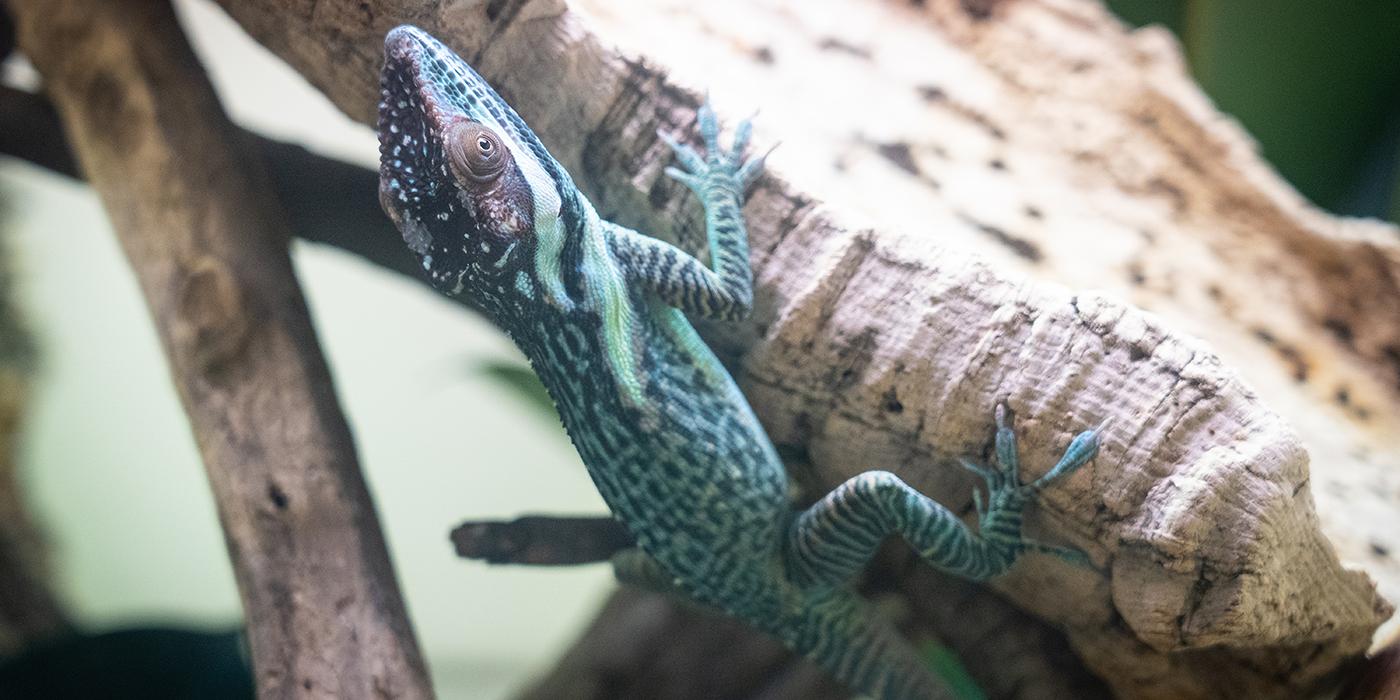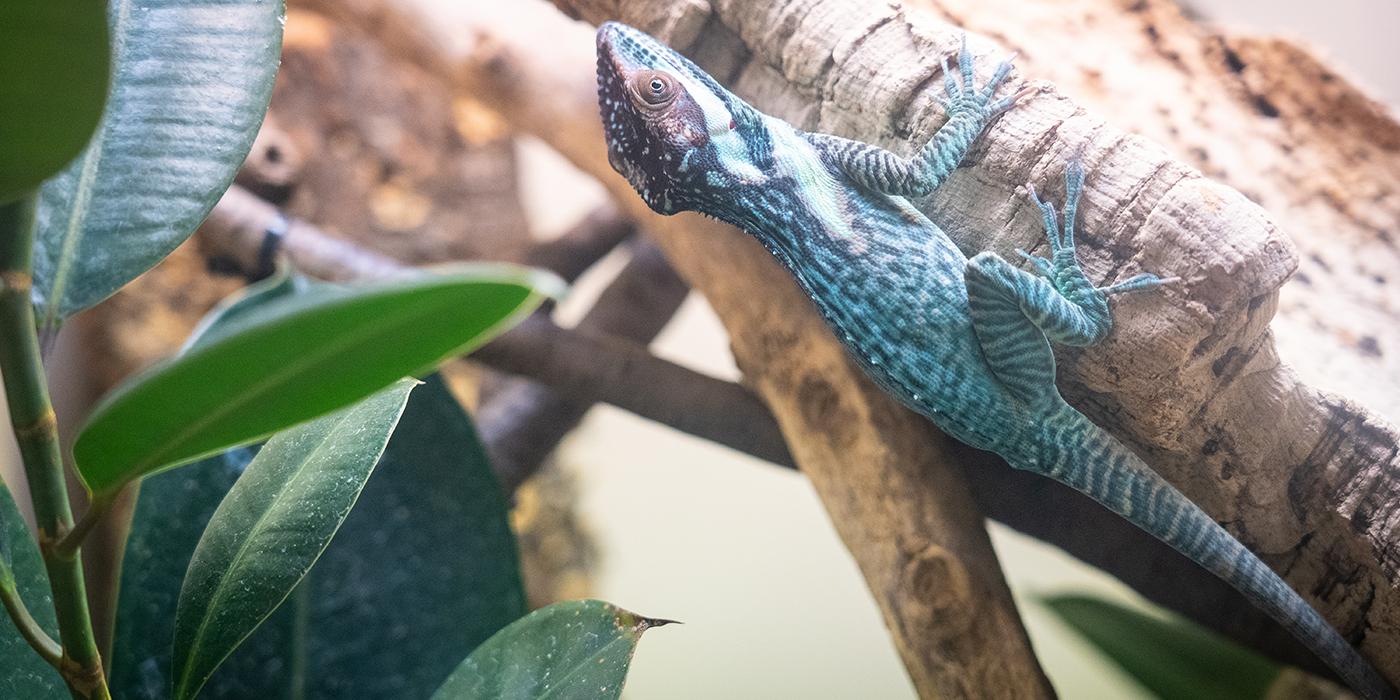Physical Description
The Smallwood's anole is part of a group of similar anoles that are endemic to Cuba. The group is called the equestris species complex. A species complex is a group of species that are closely related and so similar that it is often unclear where species boundaries occur.
All of the species in this group are crown-giant ecomorphs. Ecomorphs are species that occupy the same niche in the same microhabitat. These crown-giant ecomorphs are found across various Caribbean islands. Crown refers to their tendency to be found in tree canopies, and giant references their large size. Other Anolis ecomorphs incude grass-bush, trunk, trunk-crown, trunk-ground and twig ecormorphs.
The Smallwood's anole's coloration varies geographically. They are typically deep-green and may have blue spots. Males have a colorful flap of skin underneath their chin, called a dewlap. When provoked, males extend their dewlap to appear large and more threatening to territorial enemies or predators. They also flash their dewlap during the breeding season to attract females.
Size
Native Habitat
Lifespan
Food/Eating Habits
Smallwood's anoles are arboreal hunters that climb through the trees in search of insects, grubs and tree frogs. They consume water by licking it off of leaves.
At the Smithsonian's National Zoo, they eat crickets, mealworms, earthworms and roaches.
Social Structure
Reproduction and Development
Breeding season for the Smallwood's anole takes place from March to September. Males initiate the contact by approaching a receptive female and climbing onto her back. Only one egg is produced at a time, and the time between eggs ranges from 5-25 days.
The female digs a hole for the egg with her snout. Once laid, the eggs are buried in the hole for incubation, which lasts 54-69 days.
Conservation Efforts
The Smallwood's anole has not been assessed by the International Union for Conservation of Nature, but most studied populations are stable. These lizards are highly adaptable and can switch niches in order to survive in new or changing environments.
Habitat loss is their primary threat. Smallwood's anoles and similar species are also commonly taken from the wild to be kept as exotic pets.
Help this Species
- Practice ecotourism by being an advocate for the environment when you’re on vacation. During your travels, support, visit or volunteer with organizations that protect wildlife. Shop smart too! Avoid buying products made from animals, which could support poaching and the illegal wildlife trade.
- Choose your pets wisely, and do your research before bringing an animal home. Exotic animals don’t always make great pets. Many require special care and live for a long time. Tropical reptiles and small mammals are often traded internationally and may be victims of the illegal pet trade. Never release animals that have been kept as pets into the wild.
Animal News

Leaf-tailed Gecko Treated for Skin Cancer With Chemotherapy





